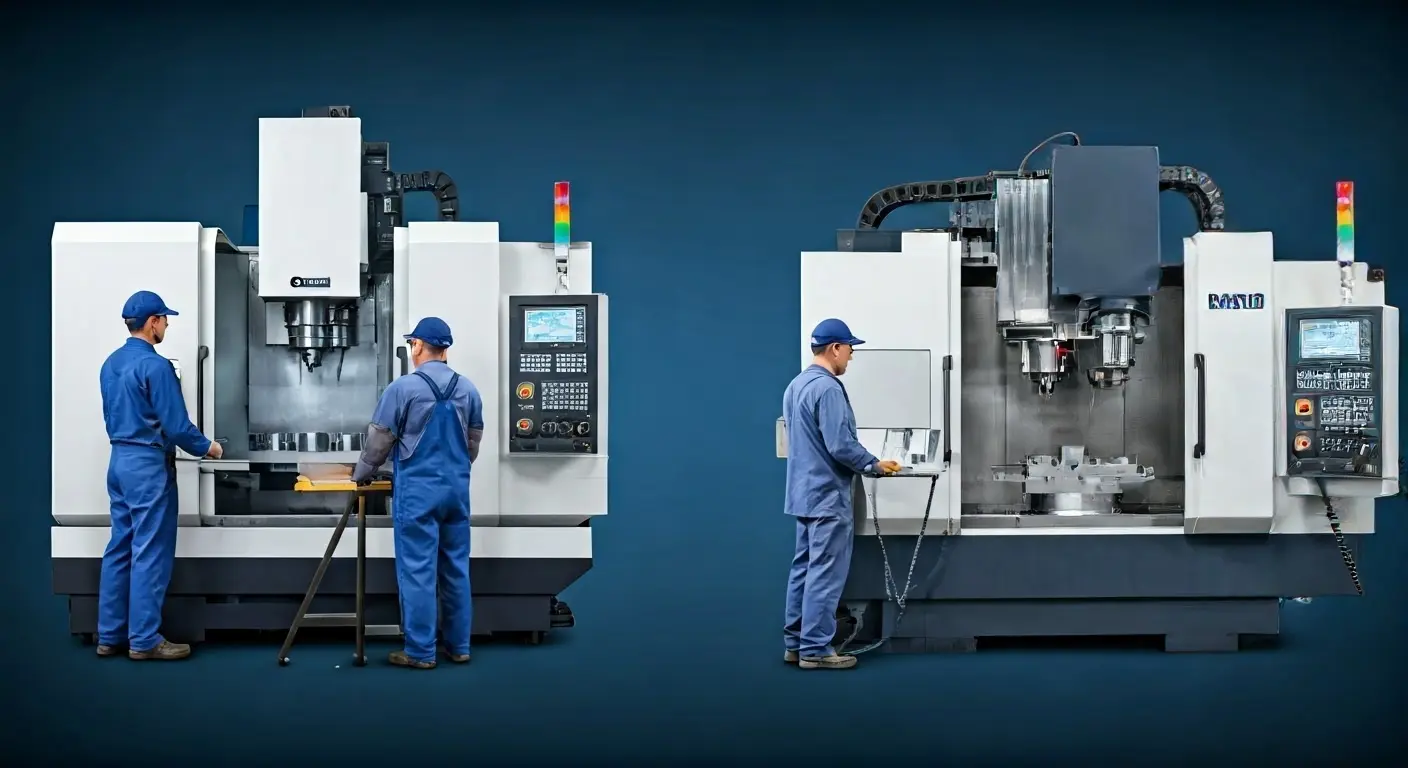
- +8615586668226
- [email protected]
- Nr 30, Hongbang Industrial Park, Shenzhen

CNC machining is a subtractive manufacturing process where computerized controls operate machine tools to remove layers of material from a stock piece. Think of it like sculpting, but instead of a chisel, we use high-precision cutting tools guided by computers.
Why is it important? Because it allows for unparalleled precision, repeatability, and automation. This means we can create complex parts with tight tolerances for a variety of industries. From Aerospace to Medical Devices, Obróbka CNC enables the production of high-quality components crucial for innovation and advancement.
The Proces obróbki CNC generally includes these key steps:
Nasz Usługi obróbki skrawaniem ensure a seamless process, from design to finished product.
CAD/CAM software is the brains behind CNC precision. CAD allows designers to create accurate 2D or 3D models, while CAM translates those designs into machine-readable code. This integration ensures that the final product closely matches the intended design.
Korzystanie z Oprogramowanie CAD/CAM, we can simulate the machining process, optimize cutting paths, and minimize errors before any material is even touched. It’s like a virtual rehearsal that saves time and resources. This is especially crucial when dealing with complex geometries or tight tolerances required in industries like lotnictwo oraz urządzenia medyczne.
Tolerance refers to the acceptable range of variation in a part’s dimensions. CNC machines are known for their ability to achieve very tight tolerances, often within +/- 0.005 inches (0.127 mm) or even tighter! As a point of reference, that’s about twice the width of human hair.
Here’s a simplified table illustrating typical tolerance ranges:
| Tolerance Grade | Tolerance Range (mm) | Example Application |
|---|---|---|
| Fine | +/- 0.05 | Precision instruments |
| Średni | +/- 0.1 | General machine parts |
| Coarse | +/- 0.2 | Non-critical structural parts |
Specifying the right tolerance is critical. Tighter tolerances increase manufacturing cost. We help our clients determine the optimal balance between precision and cost-effectiveness.
G-code is the most common programming language used by CNC machines. It is like a set of instructions telling the machine where to move, how fast to move, and what tools to use. G-code commands control various aspects of the machining process, such as spindle speed, feed rate, and tool selection.
M-code complements G-code, handling auxiliary functions like coolant control and machine start/stop. Together, they form the language that brings CNC designs to life.
CNC machining is a versatile process utilized across numerous industries. Some key beneficiaries include:
These are just a few examples. The versatility of CNC allows it to serve countless other sectors, including obrona i wojsko, urządzenia przemysłowea nawet produkty konsumenckie.
Compared to traditional machining methods, CNC offers significant advantages:
By leveraging these advantages, we help our clients optimize their manufacturing processes and achieve superior results.
CNC machining is at the forefront of a manufacturing revolution. It’s enabling:
CNC is also driving the adoption of other advanced technologies, such as 3D printing and advanced materials.
CNC machines and robotics are a powerful combination. Imagine CNC machining as a highly skilled surgeon, while robotics acts as its efficient and tireless assistant.
Robots can automate tasks such as:
This collaboration increases efficiency, reduces labor costs, and improves overall production throughput. This is something the CNC machine industry needs to keep up with.
The future of CNC is intertwined with digitalization. Expect to see:
These advancements will lead to even greater efficiency, precision, and automation in CNC machining. This is the next step in the Rozwiązania CNC evolution.
If you’re looking to leverage the power of CNC machining for your project, here’s how to get started:
Oferujemy kompleksowe Usługi produkcyjne, guiding you through every step of the process. Skontaktuj się z nami to learn more and discuss your project requirements.
What types of materials can CNC machines work with?
CNC machines can process a wide range of materials, including metals, plastics, wood, composites, and even glass.
Jak dokładne są maszyny CNC?
CNC machines are incredibly accurate, with tolerances often within +/- 0.005 inches (0.127 mm) or tighter.
Is CNC machining suitable for both prototypes and production runs?
Yes, CNC machining is well-suited for both rapid prototyping and high-volume production.
Ile kosztuje obróbka CNC?
The cost of CNC machining depends on factors such as part complexity, material, and quantity. Get a custom quote for an accurate estimate.
What file formats are compatible with CNC machines?
Common file formats include STEP, IGES, DXF, and DWG.
Jaka jest różnica między frezowaniem CNC a toczeniem CNC?
CNC milling involves rotating cutting tools and a stationary workpiece, while CNC turning involves rotating the workpiece against a stationary cutting tool.
Remember, CNC machining is more than just a process; it’s a pathway to innovation, precision, and efficiency in manufacturing. It is a crucial part of a company’s Urządzenia przemysłowe. Partnering with a knowledgeable and experienced CNC manufacturer can help unlock new possibilities for your business.
Poznaj najnowsze trendy i fakty dotyczące produkcji CNC na naszym blogu.
Shenzhen Runkey Precision Technology Co. Ltd, spółka zależna Tensun Group, jest zaufanym, kompleksowym rozwiązaniem w zakresie niestandardowej produkcji, od prototypowania po produkcję. Przekształcenie pomysłu w rzeczywistość dzięki cyfrowym zasobom produkcyjnym, usprawnionym procesom, wskazówkom ekspertów, przyspieszonym terminom i bezkompromisowej jakości.
©2024. CNC Fabrication Wszelkie prawa zastrzeżone.